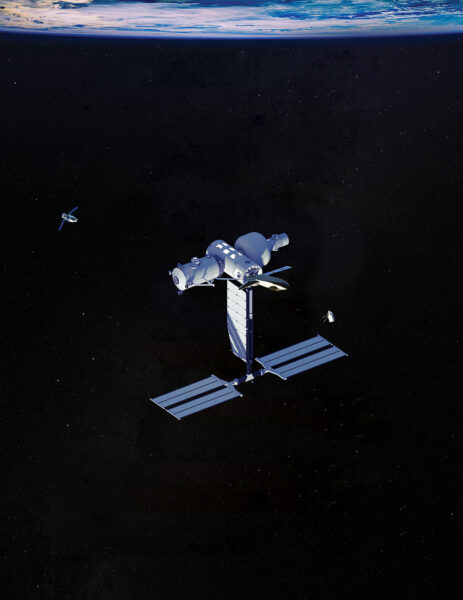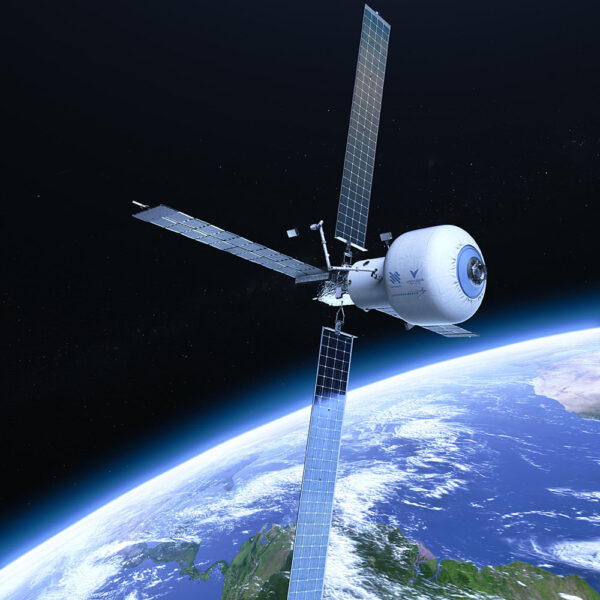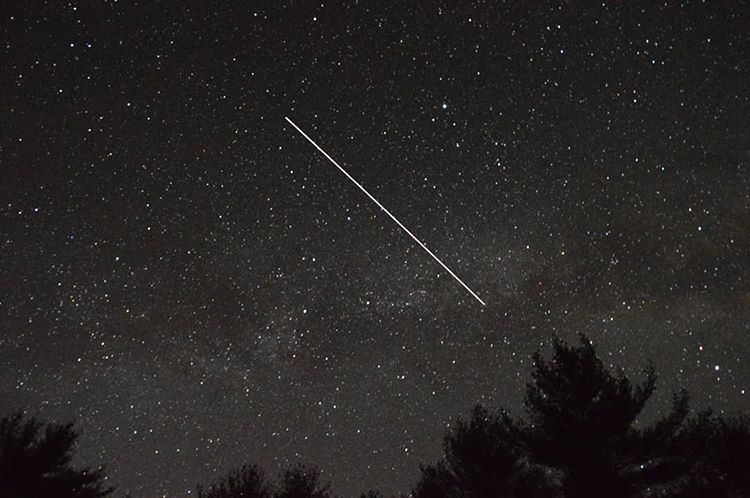NASA announced a recommendation last week to end support for the International Space Station by 2030, transitioning low-Earth orbit to commercial operations.

NASA
The coming decade will see a time of transition when it comes to human spaceflight in low-Earth orbit. The NASA Office of Inspector General released a report last week on the state of the International Space Station (ISS) and suggestions for the coming decade.
In our new report on the #ISS, we discuss the costs of operating the aging Station and examine risks associated with cracks and leaks in the Service Module Transfer Tunnel. Learn more here: https://t.co/UiygXuIOLE
— NASA OIG (@NASAOIG) December 2, 2021
An Aging Station
Specifically, the audit highlights the need to end NASA's role in the ISS by 2030. The station is currently approved for operations through 2024, and an extension until 2030 seems likely. Update (February 3, 2022): The Biden-Harris Administration has committed to continuing station operations through 2030. See more here.
Begun with the launch of the core Zarya module from the Baikonur Cosmodrome on November 20, 1998, the station has hosted a continuous human presence in space since the arrival of Expedition 1 on November 2, 2000. The final mission of the U.S. Space Shuttle Program in 2011 concluded the ISS's construction. Since that time, the station has served as a key platform for scientific studies in fields ranging from human physiology in zero gravity to Earth observation, high-energy astrophysics, and much more.
The study notes, however, that the station is starting to show its age. Indications include damage to the Canadarm 2 due to a hit by debris or a micrometeoroid (though the arm continues to function normally for now) and multiple cracks and leaks found along the interior of the Service Module Transfer Tunnel, which connects to one of the areas where the crew live and work.
Nevertheless, the report highlights the need for continued studies on the long-term effects of living in space, essential to the planned Artemis Moon landings and, ultimately, stations on Mars. That research will not be complete before the demise of the ISS, so other outposts must advance the work.
Station of the Future: Commercial Outpost

Orbital Reef
To this end, NASA selected three companies last week to develop plans for possible commercial stations in low-Earth orbit. Selected out of 11 initial competitors, the three companies include Blue Origin, which will develop designs of Orbital Reef ($130 million); Nanoracks LLC, which will develop Starlab ($160 million); and Northrop Grumman, which will upgrade the company's Cygnus delivery vehicle and work with Dynetics on a new modular station ($125.6 million). Northrop Grumman was also awarded the design contract for the Habitation and Logistics Outpost for the Lunar Gateway Station in 2020.
“Starlab will launch on a single flight, targeted for 2027,” says Jeffery Manber (Nanoracks LLC). “There must be a ‘sunset’ period whereby the ISS is still operational in orbit, but new activities migrate to the new commercial platforms.”

Nanoracks
Axiom Space is another potential player in commercial human spaceflight. The company plans to begin sending commercial crew to the ISS aboard SpaceX’s Crew Dragon starting in February 2022, with a goal of sending new modules to the ISS starting in September 2024. Arrival of the four Axiom modules in the following three years would also give the company a capability to detach from the ISS and form its own small space station.

Axiom Space
“Building on our successful initiatives to partner with private industry to deliver cargo, and now our NASA astronauts to the International Space Station, NASA is once again leading the way to commercialize space activities,” said NASA administrator Bill Nelson in a recent press release. “With commercial companies now providing transportation to low-Earth orbit in place, we are partnering with U.S. companies to develop space destinations where people can visit, live and work, enabling NASA to continue forging a path in space.”
This all comes at an interesting time for ISS operations. Last week, the crew delayed a spacewalk for scheduled maintenance due to debris concerns from the recent Russian anti-satellite missile test. Meanwhile, China continues to move ahead with construction of its new Tiangong space station, started just last year.
The End
The NASA report also provides some interesting insight into what the last days of the station might look like. Deorbiting the station will cost about $1 billion, to be split among international partners. (For comparison, the station costs $3 billion a year to operate, a third of NASA’s annual human spaceflight budget).
A controlled deorbit will take several years. The station will start lowering its orbit sometime between 2026 and 2028, depending on the Sun's activity which in turn affects the thickness of Earth's atmosphere and drag on the station. The goal is a destructive reentry and dispersal over the remote South Pacific by 2030. The study also notes that, in the event of an emergency, that timeline could be sped up to about six months to reentry.

Dave Dickinson
It will be sad to see the station go . . . For years, it has been a familiar sight silently sliding by in the night sky, an amazing reminder of humanity’s outpost in space. Hopefully, the continued presence of humans in space will continue for decades to come.
 2
2









Comments
Dean
December 11, 2021 at 1:25 pm
This article reminds me of the debris problem we already have in the space around our home - Earth.
Is it possible that a better solution for the final disposition of the ISS may be to send it into the Sun for cremation?
This same question / problem presents itself as private commercial interests will be forthcoming around Earth. What safeguards will be in place when private commercial companies start to use the ISS, modify it and otherwise move into space around our home - Earth.
There isn't a great history of private commercial interests doing the right things here ON Earth, let alone when they gain access to the space around Earth and elsewhere in space.
Is the UN the proper place to originate safeguards for this? Something that will cover everyone, private, commercial or otherwise!?
You must be logged in to post a comment.
Warren-Odom
December 14, 2021 at 9:47 am
I'm sure there would be a tremendous cost to accelerate the station, or any of its major modules, to escape velocity to get to the Sun. I'm also pretty confident it doesn't even have the powerful rocket motors (or fuel tanks) that would be required to do it. Even if it were practical to retrofit those, any decent acceleration would be liable to tear off appendages such as the solar panels, creating more orbital debris.
You must be logged in to post a comment.
You must be logged in to post a comment.